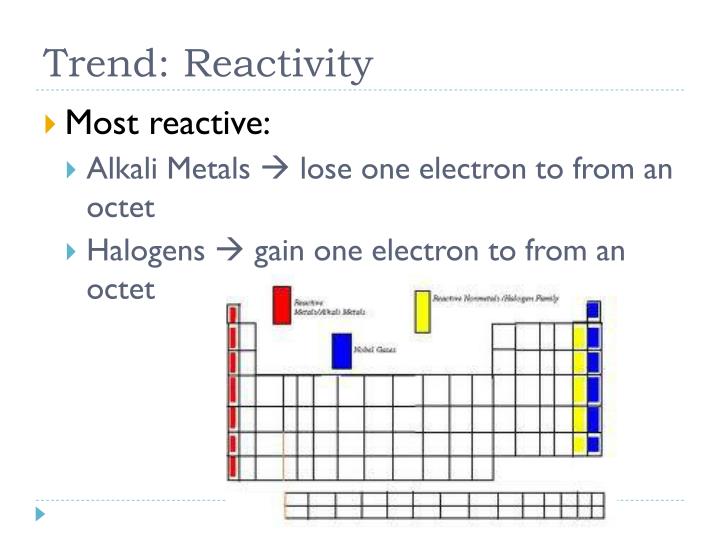
In the second step, loss of an anion, X ⊖ or Y ⊖, regenerates an aromatic system, and, if X ⊖ is lost, the overall reaction is nucleophilic displacement of X by Y. The aromatic system is destroyed on forming the anion, and the carbon at the reaction site changes from planar (sp 2 bonds) to tetrahedral (sp 3 bonds). Why Are Halogens So Reactive Uses of Halogens Lesson Summary What are Halogens Halogens is the collective name given to a group of non-metallic elements. The first step involves attack of the nucleophile Y: ⊖ at the carbon bearing the halogen substituent to form an intermediate carbanion. The nucleophilic compound doesnt give substitution reaction easily, but some aromatic compounds were found to undergo nucleophilic aromatic substitution. The generally accepted mechanism of nucleophilic aromatic substitution of aryl halides carrying activating groups involves two steps. However, there must be more than a subtle difference in mechanism because an aryl halide is unable, to pass through the same type of transition state as an alkyl halide in S N2 displacements. The same nucleophilic reagents are effective (e.g., CH 3O ⊖, HO ⊖, and RNH 2) the reactions are second order overall (first order in halide and first order in nucleophile) and for a given halide the more nucleophilic the attacking reagent, the faster the reaction. In general, the reactions of activated aryl halides closely resemble the S N2-displacement reactions of aliphatic halides. Under the same conditions chlorobenzene completely fails to react thus the activating influence of the two nitro groups amounts to a factor of at least 108:Ī related reaction is that of 2,4-dinitrofluorobenzene with the amino groups of peptides and proteins, and this reaction provides a means for analysis of the N-terminal amino acids in polypeptide chains. For example, the displacement of chloride ion from 1-chloro-2,4-dinitrobenzene by dimethylamine occurs readily in ethanol solution at room temperature. In the second step of the S NAr mechanism involves loss of a leaving group to restore aromaticity.\)Īddition-Elimination Mechanism of Nucleophilic Substitution of Aryl HalidesĪlthough the simple aryl halides are inert to the usual nucleophilic reagents, considerable activation is produced by strongly electron-attracting substituents provided these are located in either the ortho or para positions, or both. This intermediate is an anion with a highly delocalized charge, for which several resonance structures may be written. In the first and rate-determining step, the aromatic ring is attacked by a nucleophile, forming the intermediate Meisenheimer complex. Understanding chemical reactivity through the use of state-of-the-art computational techniques enables chemists to both predict reactivity and rationally design novel reactions. Substitution in these reaction takes place by a two-step mechanism, an addition- elimination sequence. Such substituents stabilized an intermediate anion by resonance. 1 Faiq 348 16 The bond enthaply of halogens decreases down the group so why is the reactivity of halogens with hydrogens decreases down the group Answers and Replies 2 Letsthink 350 79 Bond always involves two atoms.

These reactions are subject only to aromatic compounds which contain a powerful electron-withdrawing (usually a nitro group) and a leaving group (usually a halide) which must be ortho or para to the electron-withdrawing group (reaction with meta position of substituents is not observed).


Nucleophilic Aromatic Substitution (S NAr) Explained: For example, when an aromatic compound is treated with a strong nucleophile (hydroxide), a leaving group (bromide) is displaced.

Nucleophilic aromatic substitution is a reaction in which the aromatic ring is attacked by the nucleophile. Nucleophilic Aromatic Substitution (SNAr) Nucleophilic Aromatic Substitution (S NAr) Definition:


 0 kommentar(er)
0 kommentar(er)
